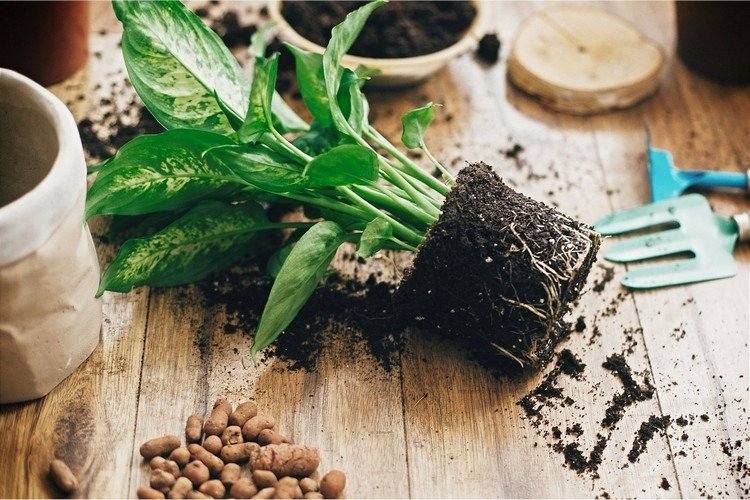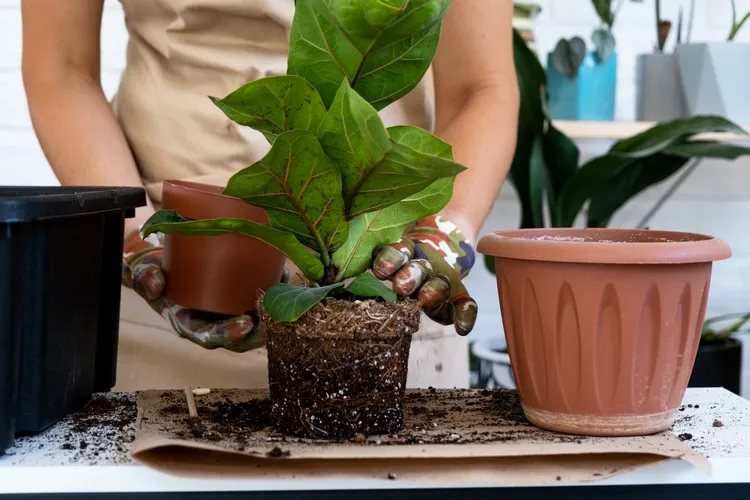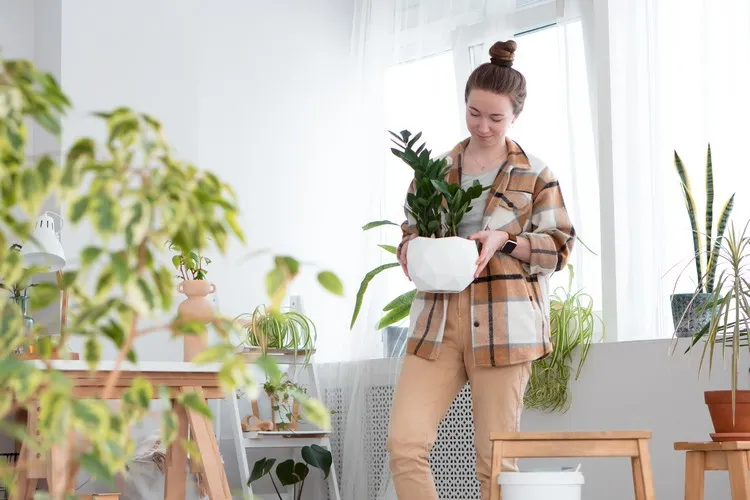Essential for the good development of the plant and very easy to carry out, the repotting of an indoor plant is an operation not to be underestimated. However, it not only raises many questions, but also concerns. To guarantee the good health of your plants, the editorial staff explains to you how and when to repot houseplants, as well as the situations where it is better to avoid this.
Why do you need to repot houseplants?

An essential step in the proper maintenance of indoor green plants, but also shrubs and fruit trees grown in containers, repotting has several benefits for the plants. In addition to renewing the organic matter so precious to plants, this operation will also provide them with more space, which will boost their development and growth. That is, the plants will feel more comfortable. However, one question burns the lips of lovers of home greenery: When exactly should you repot houseplants? We shall give the answer in the next paragraph.
When to repot indoor plants?

When should indoor plants be repotted? Here is the question that torments many people and the answer is actually quite simple. Typically, the best time to repot is early spring before the plant enters a vegetative phase. However, many experts today claim that the majority of houseplants can be repotted at any time. What matters is how the repotting is done. Thus, if you buy a plant in winter, it is quite possible to change its pot if necessary. Its development will therefore be stimulated and the plant will be comfortable. This is valid for all the plants that have just been purchased.
Remember to repot a houseplant if one of the following factors is present:
- More and more frequent watering
- Plant coming out of the pot
- Roots sticking out of the drainage holes in the bottom of the pot
- The growth of the plant has been disturbed for years
- Damaged container
- The quality of the soil is altered: presence of mold, bad smells, etc.
How to properly repot a houseplant?

Now that you already know when to repot a houseplant, let’s take a look at the steps you need to follow to make this operation a success.
Step 1: Preparation and choice of container
Before proceeding with the repotting of the indoor plant, it is crucial to choose a suitable container. Nothing complicated here! The ideal would be to take a container whose diameter is greater than that of the old pot and make sure that it has drainage holes. Next, the prep step is to find a work space and cover the surfaces with newspaper to make cleanup easier for you. It doesn’t matter if you are repotting outdoors or indoors, it is a very messy task.
Warning: If it is cold, it is better to repot the plants indoors to protect them from thermal shock.
Step 2: Remove the plant from its current pot
Removing the plant from the pot may seem easy, but sometimes the roots would have completely filled the pot, which can complicate the task. Also check to see if they are coming out of the bottom, through the drainage holes, and do this carefully.
Step 3: Clean the roots
Once the plant has been removed from its old pot, it’s the perfect time to check and clean the roots. Feel free to cut off any that are damaged, soft, black, dry or dead. To do this, use a sanitized and well-sharpened pruner.
Step 4: Plant in the new container
Start by laying a draining layer at the bottom of the pot. This consists of gravel or clay balls and is recommended, but not mandatory. Then, fill the container with potting soil suitable for the repotted plant. Put the root ball in the center of the pot and fill in with soil. Finally, tamp lightly before watering.
When to avoid repotting?

Repotting indoor plants is an essential step in their proper development, but in some cases, it is rather to be avoided. Here is an overview:
- Avoid repotting a flowering plant.
- Do not practice with plants that are too large at the risk of injury.
- Some plants prefer small pots. These are, for example, the bird of paradise and the spathiphyllum plant.
- It is recommended not to repot a diseased plant.
